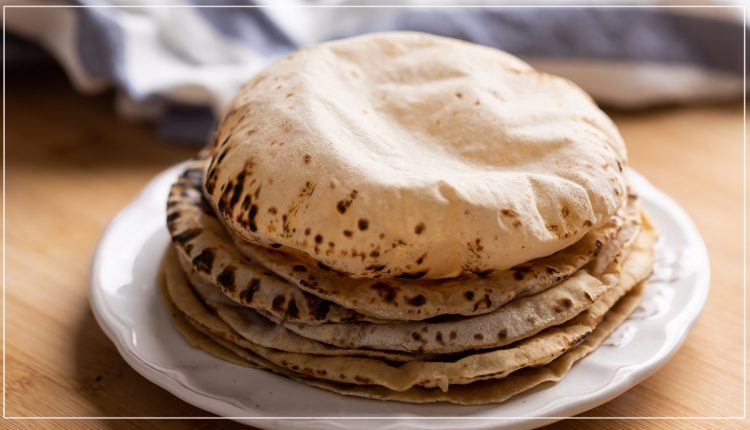
How Good is Your Bread or Roti?
Do you know? The daily whole wheat bread/roti you consume has more nutritional value than the white bread you buy from the bakery. Why? Simply, because the outer layer – the fiber, the inner baby seed being full of nutrients and carbohydrates is kept intact in the home made whole wheat bread. Here are a few benefits that tell you how good your daily Roti is!
Healthy Bowels
Breads made with 100 percent whole grain wheat are a good source of bran fiber. The fiber in wheat bread will improve your bowel movements by softening the faeces and helping you pass your stools, making them easier to pass through your intestines. Fiber may provide relief from irritable bowel syndrome. It is recommended that you increase your fiber intake with whole foods instead of taking medications to cure irritable bowels. It is estimated that the adult males up to age 50 should have approximately 38 grams of fiber daily, and women 25 grams daily. One slice of whole wheat bread contains about 2.8 grams of fiber.
Happy Heart
Whole grains were found to reduce the risk of coronary heart disease in a study of 42,850 men, ages 40 to 75, over a period of 14 years. A 2004 issue of “The American Journal of Clinical Nutrition” reported that men who included three servings of whole grains in their daily diet had a lower risk of coronary heart disease. The U.S. Department of Agriculture recommends that half of your daily grain intake be whole grains. For adult women ages 19 to 50, the USDA recommends 6 ounces of grain daily; one slice of bread is equal to 1 ounce. Men should get 7 to 8 ounces per day.
The Smarter You!
Bread made with whole wheat helps you maintain a smarter you! According to a study published in a 2003 issue of “The American Journal of Clinical Nutrition,” women who ate more whole grains consistently weighed less than women who ate fewer whole grains. Approximately 74,000 females ages 38 to 63 were studied for 12 years. The women who ate whole grain foods, such as 100 percent whole wheat bread, had a 49 percent lower risk of weight gain than women who ate refined grain products, such as white bread.
Improve Your Mental Health
Within the whole wheat grain is the vital wheat baby seed or embryo which contains vitamin B, vitamin E, magnesium, phosphorus, iron and zinc. According to the University of Maryland Medical Center, some studies have suggested that vitamin B and vitamin E may protect against diseases of mental decline, such as Alzheimer’s disease which is a disease causing memory loss and inability to remember recently learned facts.
Mistakenly, many people still think bread is fattening. On the contrary, bread can be the best fat-fighting friend in your diet. Bread is naturally low in fat and can be high in fiber. Because it is so versatile, you can easily eat many servings a day in place of other higher-calorie foods. As long as you don’t pile on fatty spreads or fillings, bread can help you lose weight. In fact, studies have proved that people who eat 8 to 12 slices of bread a day still lose weight as long as their total diet is low in calories. The trick is keeping yourself from slathering that hearty bread with butter or margarine. Use a little olive oil instead for a taste treat and your heart health.
Complete Meal
The little magic grain is high in complex carbohydrates, very low in saturated fat, a rich source of protein, and packed with nutrients and fiber. When whole-wheat flour is refined to make white bread, the inner germ and outer bran layer are removed, leaving only the starchy endosperm. It is saddening that more than half the fiber of wheat in that bran, along with almost three-quarters of the vitamins and minerals in the germ are just blown away. In whole wheat bread we put back the fiber and the inner germ to give maximum nutrition. Thus the home made bran bread is the most delicious and healthy of all the breads. Happy eating!

